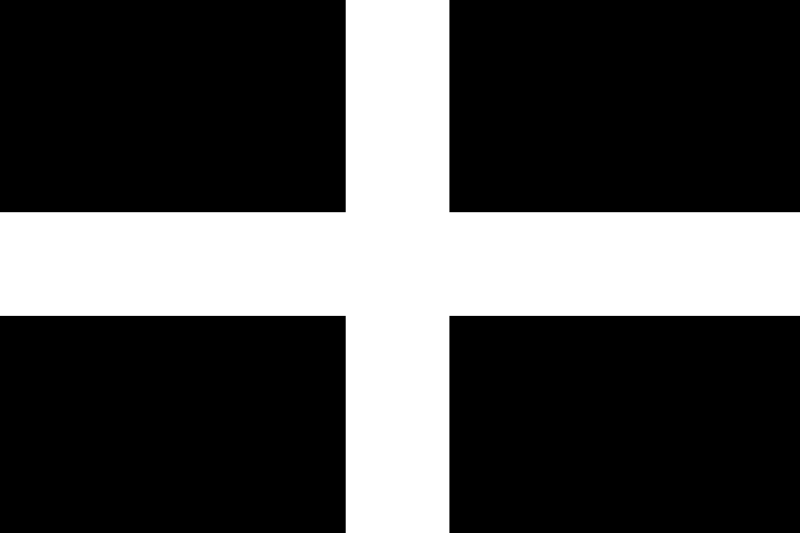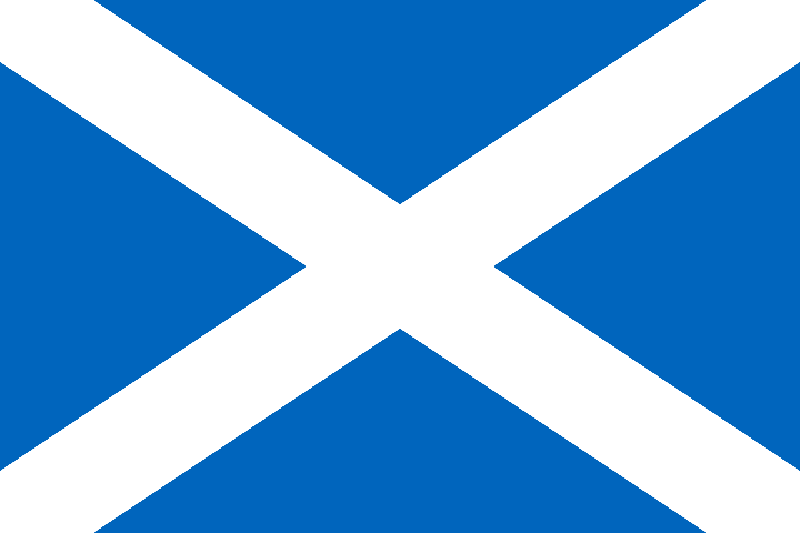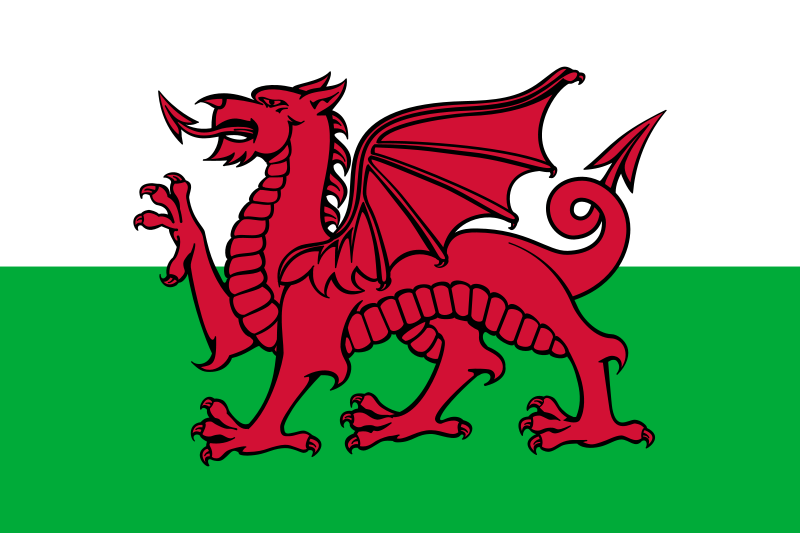Flags of the 6 Celtic Nationsby Tom Doran This article will focus on briefly describing the elements that make up the flags of what is commonly known as the 6 Celtic Nations. It is not meant to be an all inclusive history of each of these nations, which we will save for a future article. The 6 Celtic Nations as identified by the Celtic League are: Brittany, Scotland, Ireland, Isle of Man, Cornwall and Wales. These are considered to be the remnants of the once mighty Celtic peoples which stretched from Ireland to Turkey. The nations are tied by language groups and some cultural connections and traditions, but the exact extent of any historical biological connections is currently being delved into by DNA studies, and is not definitive yet. There are of course large Celtic connections to all of Britain and present day France and Belgium (the Gaulic tribes) as well as Spain (Galicia), but they are not considered to be "Celtic" any longer, seeing as how their Celtic tongues have long been silent in what is now England and France specifically, and ancient Celtic traditions mostly gone or altered beyond any reasonable interpretation - though future DNA testing, if done on a large enough scale, might change some peoples views of exactly what may constitute being a Celt. The Celtic League classifies the 6 nations as countries where their native Celtic language was spoken into modern times. Ireland The Tri-color of Ireland (Bratach na hÉireann) is Green, White and Orange (early on it was often yellow): The green for the country itself and the Irish people - the Orange standing for the Protestant followers of William of Orange, whose military forces defeated those of the Catholic Stuart Monarch James II - the white stands for the hope of conciliatory relations between both sides. At one time the tri-color (originating during the era of the French Revolution), was considered the flag of the Sein Fein - but from 1916 onwards it is now the flag of all Irish. An older green flag with harp was also at one point the national flag of Ireland. Isle of Man Man is an island in the Irish sea - once controlled variously by Scotland, Ireland and England (and now the British Crown) - it has the oldest recorded Parliament in Europe. The Manx language is closely related to Scottish Gaelic. The flag is a triskelion (common in other countries as well, it consists of three interlocking spirals or other images - interlocking spirals are an oft used motif in Celtic art) and as can be seen it features three armored legs with golden spurs over a deep red background. Based on an ancient Manx coat of arms it has been the official flag of Man since the early 1930's. Cornwall Jutting out on the low west coast of England, Cornwall has a rich history - often associated with the legends of King Arthur, it is a beautiful place attracting many English visitors. The Cornish language while now dead, is getting a bit of a renaissance as the interest in Cornwall's ancient history grows - and one can take classes in it if one wishes. The flag has been called the banner of St Perran and the Standard of Cornwall. The legend goes that the black symbolizes the black ore and the white the bright silver color of molten tin that St. Perran witnessed being smelted. Scotland The Saltire - the national flag of Scotland is one of the oldest in the world. It is also occasionally known as the Banner of Scotland (Bratach na h-Alba). There is a legend that St. Andrew, the patron saint of Scotland was crucified on an x-shaped cross - hence the flag. Another legend refers to a 9th century battle between a combined force of Picts and Scots, led by the Pictish king Óengus, against invading Angles. During the battle a white cross supposedly appeared in the bright blue sky, inspiring the Pictish/Scots warriors and leading them to victory. Brittany The flag of the Bretons (Gwenn-ha-du) is a modern (20th Century) invention and design, though there are older elements in it. The French have long tried to suppress any cultural and lingual distinctions of the Celtic Bretons (descendents of Celtic Britains who fled their island from invading Romans and settled in what is now France), and the flag was at first thought to have been seditious, but is now recognized and accepted as a representation of the Breton folk. The nine horizontal stripes represent the traditional dioceses of Brittany. The five black stripes indicate the French speaking areas, while the four white stripes represent the Breton speaking regions. The flag has a canton in the upper left corner, indicating an ancient Breton coat of arms. Wales The striking Welsh flag consists of the Red Dragon of Cadwaladr, and the Tudor colors - green and white (the Tudors were the Welsh descendant kings of England). The dragon has long been a symbol of the Welsh, and has been both associated with Arthurian Legend and perhaps Roman-Britain unity. There is also a tale that the dragon represented the Celtic victory in battle and ascendance over the invading Saxon (symbolized in this legend as being a white serpent overcome by a red one). |





